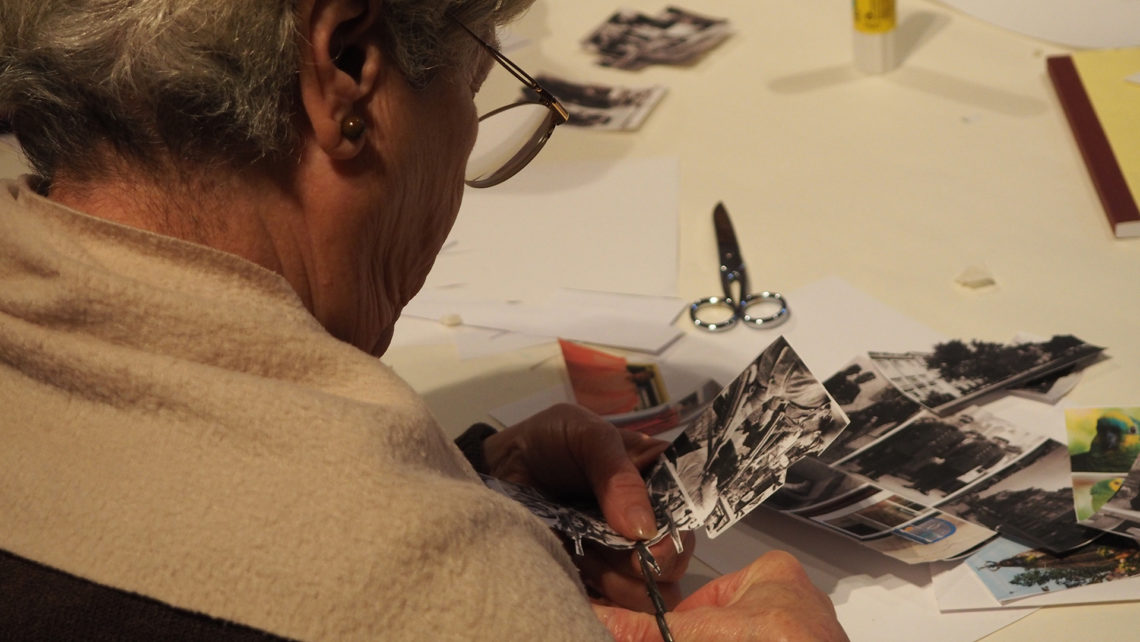
Legacies
Legacies: let's create a board game
Legacies laboratory was held at the Republican School Centre in Mouraria, within the scope of Saber Maior Senior University (Santa Maria Maior Parish, Lisbon Municipality), during two weeks, in November 2017. It was created and coordinated by Ana Moya, and it was implemented with the logistics collaboration of Marisa Moura from Saber Maior Senior University, and with the assistance of Khaled Berdi (Mouraria’s neighbor). It was attended by a regular senior group of eleven people between the ages of 60 to 80 years old. Half of the participants were national migrants from other regions of Portugal that settled in the neighborhood in the 1960s. The rest of the participants were born in Mouraria. Every afternoon for three hours, we explored with them the sensorial memories and the social and urban changes of the neighborhood through time. The goal was to activate the communication and the sharing of stories in group conversations through game playing and artistic activities. The aim of this laboratory was to carry out artistic activities of plastic expression around the recognition, interpretation and revision of memories and the identity of Mouraria’s neighborhood.
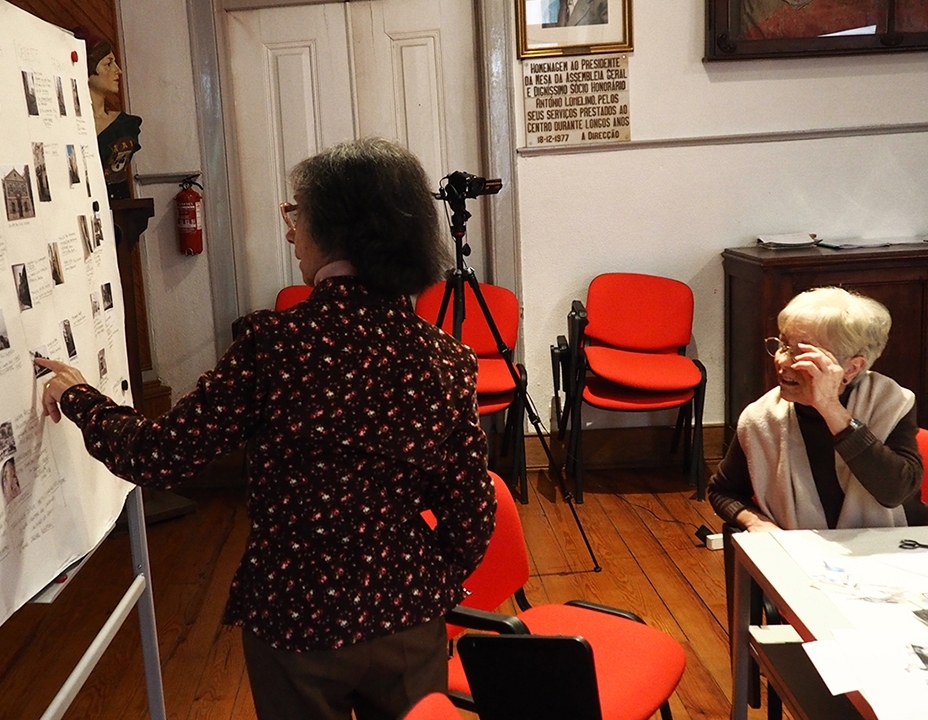
We explored the imaginaries, emotions and psychology of perception of their urban environment. The activities were divided into three phases: the first aimed to bring awareness and educate the visual and sensory perception; the second to train the mind and memory, and the third to create and activate the communication and sharing of stories and group conversations through the playing of board games and the elaboration of collages and the editing of a book. The collection of collages, audio-visual recording registers and board games, were the artistic material for the construction of a cartography of emotions of this laboratory. We designate as a cartography of emotions, a cartography of the psyche that articulates the social, mental, and environmental register of the environment (Guattari, 1989:18). This cartography shows a space of representation lived and experienced by feelings, emotions, rhythms, speeds, intensities, movements, visions, fantasies, desires and memories (Harvey, 2006: 135).
The work methodology of the laboratory was structured in three movements: Space Recognition, Interpreting the Body in Space , and Communicating a Somatic Landscape.
With virtual itineraries in the neighbourhood we explored the historical evolution of space. We printed historical photographs in order to travel in time. We compared the social life in the past with nowadays looking at those elements that endured versus those that disappeared.
We compared absences, permanencies and transformations in the public space and in the urban life. We discovered that what was felt as absence were mainly bakeries and food stores, including local and regional food products, specific professions based on a self-sustainable and family economy, craftsmanship and social neighboring cooperative structures, and a diversified local family commerce, storehouses and local industry, theatres and cinemas. Prostitution guest houses and hostess bars, were remembered with a sense of nostalgia. For them it was experienced as a normal part of the neighborhood life. Relevant permanencies were dairy shops and some taverns and restaurants including public fountains and the washing tanks in Rosa square, still in use at the moment of the Lab. The participants chose photos related to life-stories and life experiences and key-words that could link their memories to urban places. Those images selected were chosen in the decade of 1960’s, the period where most of the participants arrived to the neighborhood. Those views selected depict main public spaces around Martim Moniz, Intendente and Olarias square, which were, in the past, main economic and social centers. The keywords associated to these spaces tell us that there is an equitable balance between what is felt as absence and what is still permanent in the neighborhood. There is also an awareness of the existence of a new multicultural environment that is valued and experienced as a positive drive for the neighborhood. However, the participants had a sense of loss of the cooperative and comradeship way of life of the past.
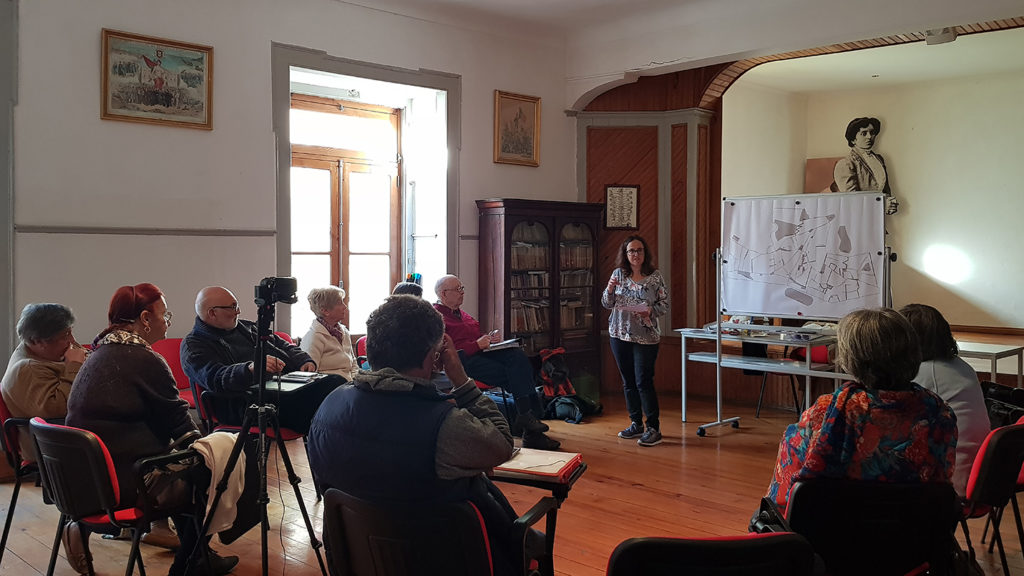
We also explored their inner subjective world, asking them to take part and play in two board games designed by the researcher: a “Memory Game ” and a “Game of the Neighborhood”. The first game has the format of cards that work with the five senses and it was designed to facilitate the conversation and dialogue among participants in a cumulative storytelling of synesthetic sensory memories. A smell took us to an image, which transported us to a taste, which directed us to a tactile sensation, which made us remember a sound or some words that were expressed in that specific situation. As we played, we used a cartography of Mouraria to locate the places where those memories and multisensory experiences took place. The second game was designed following the tradition of nineteenth century educational games of geographical exploration. The board game represents the labyrinth of streets in Mouraria’s neighborhood with its stairs, public spaces, public transportation and emblematic buildings, where participants could meet simultaneously with the past and present of its public spaces (its neighbors, traditions, rituals and leisure, commerce, gastronomy, migration, tourism, and public spaces). The participants travelled around Mouraria to meet their neighbors, their festivities, the commerce, gastronomy, migrants and tourists.
The majority of the sensorial and synesthetic memories were integrating the visual, hearing, smelling and action memories. Those related with sounds spoke about children playing in the streets, ambulant commerce or the discussions between neighbors in the streets. Smells were related to coffee factories, street food vendors, grocery and fish shops, small restaurants and bakeries.
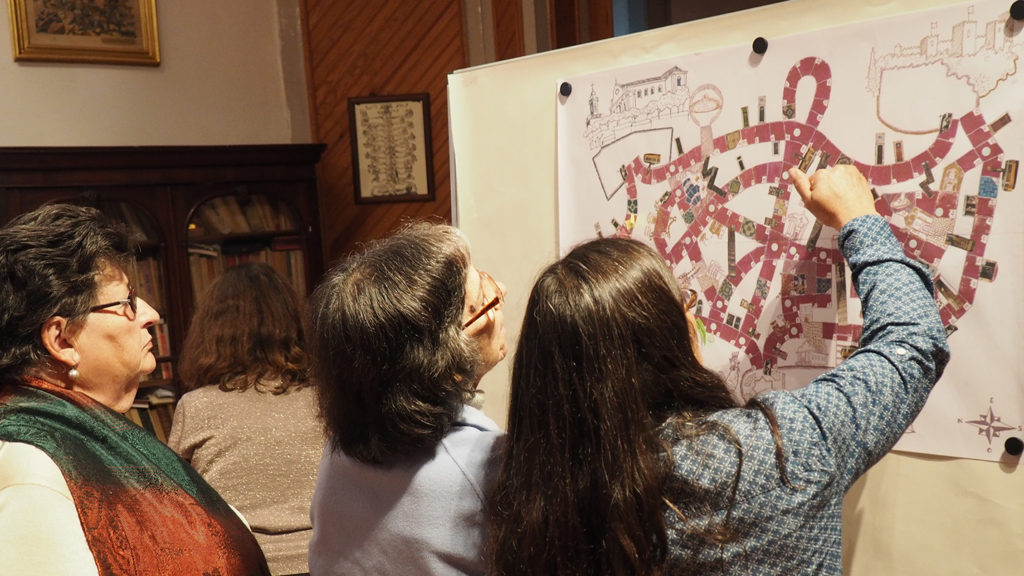
In this stage the participants chose five personal memories and they were asked to represent them into photomontage compositions that explain the multisensorial experience of urban places. Each photomontage composition situates characters, actions, sensations and feelings in a specific location. At this stage, participants chose five historical photographs of places in the neighborhood that evoke a story from their past and we asked them to write down the elements and components of their stories: characters, actions, sensations, feelings. Once the stories were obtained, we carried out a work of composition and photomontage to visually explain a multi-sensory experience from the past, which was later edited in a small book that included the transcription of all the narrated stories. This booklet was offered to participants at the end of the laboratory.
From thirty six different collages created by the participants we observed that there is a balance between stories related to the sense of vision, smell and sound, and a smaller amount with the sense of taste and touch. A proportion of 30% of the memories correspond to an active participation of the body in space through movement, implying the transformation of space due to that specific action. Words are as important in the recalling of a memory as the memory related to the sense of sound, vision or smell. The majority of memories related to actions talk about encounters with the community (body performances in space, confrontations and responses, displacements and movements; gatherings, meetings and encounters; or the creation of works of art). From the thirty six stories, 70% of them contain a memory of joy, pleasure, faith, fun, pride, comradeship and nostalgia; and the rest contain a memory of fear, grief, distress, sorrow, poverty and scarcity. Therefore, in Mouraria, the past carries an optimistic evocation.
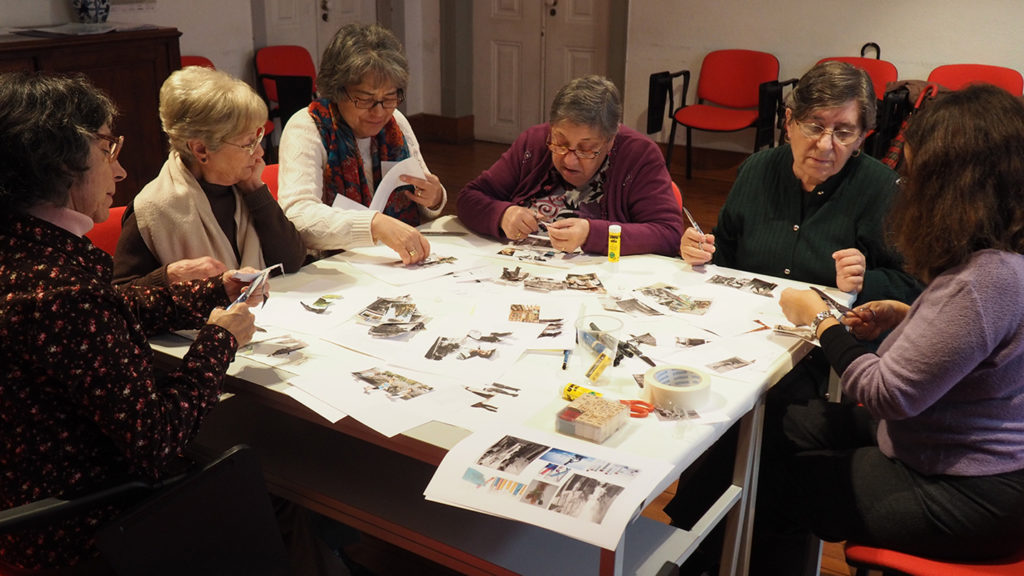
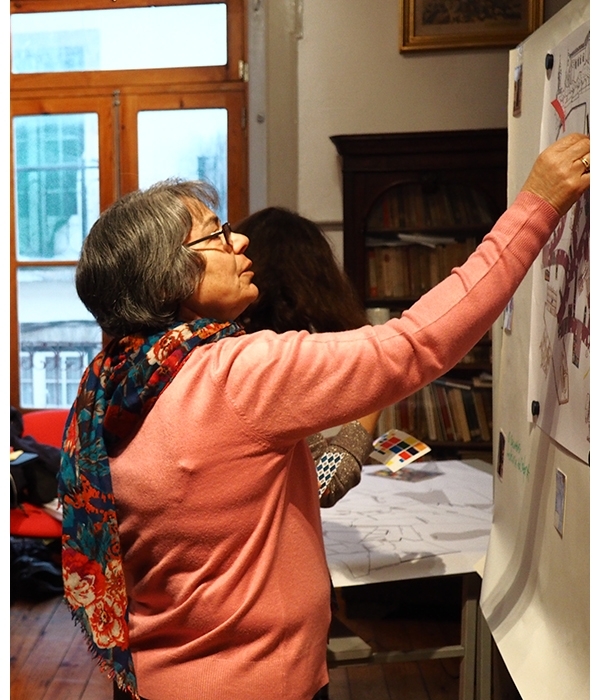
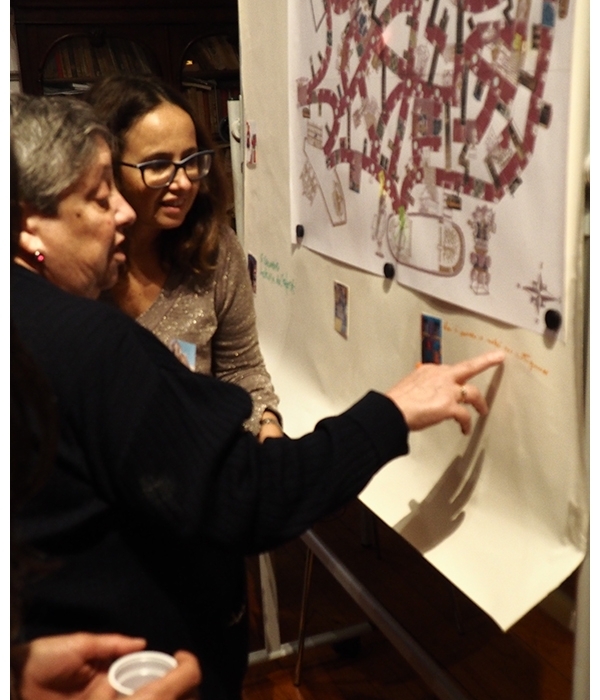
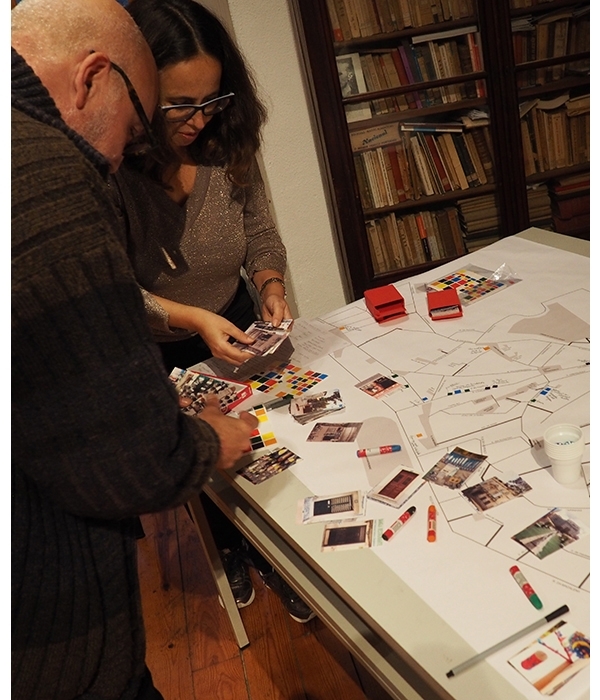
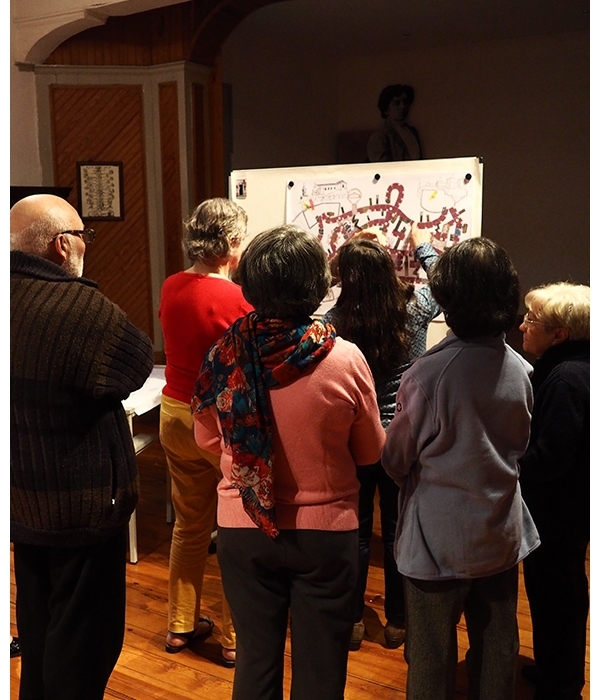
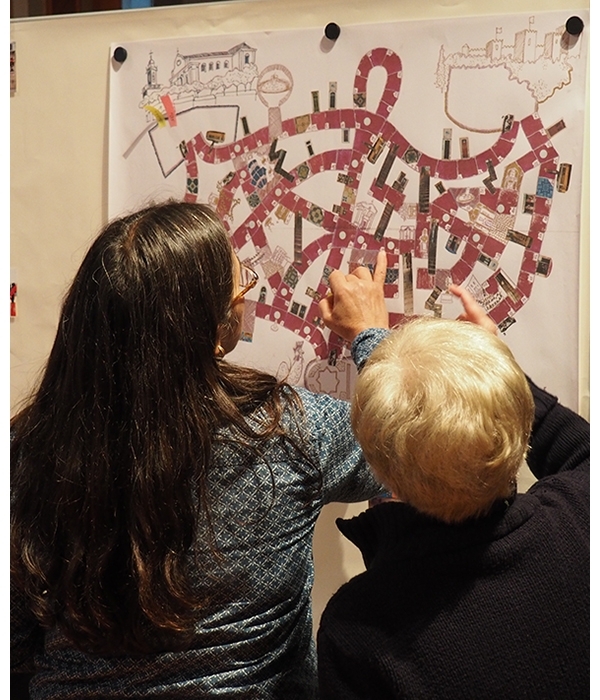
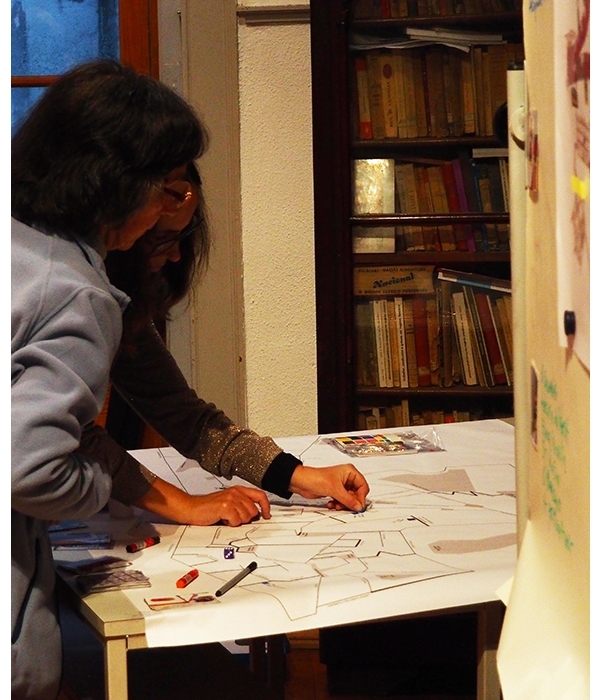
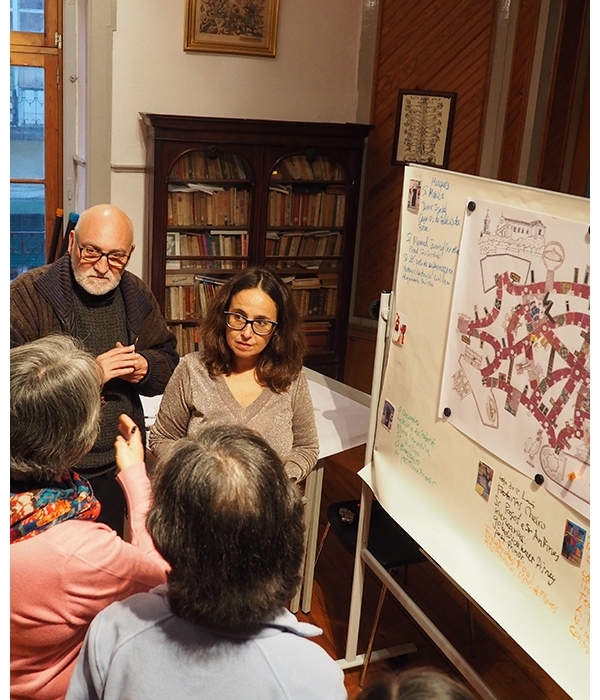
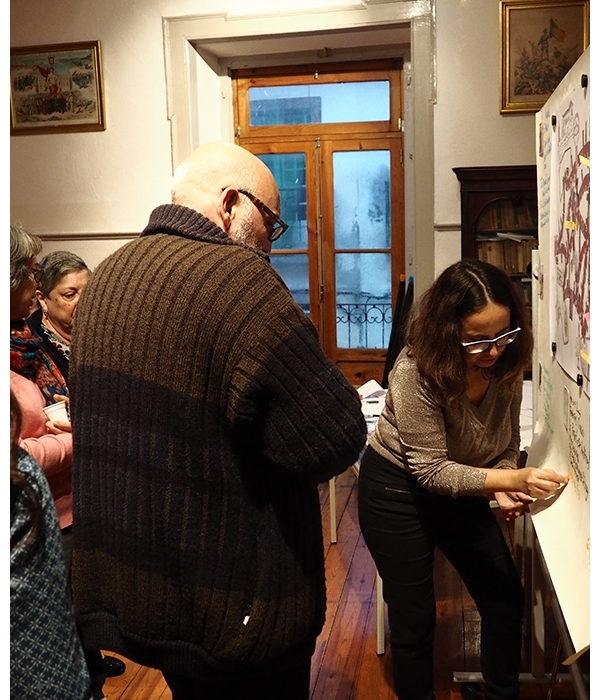
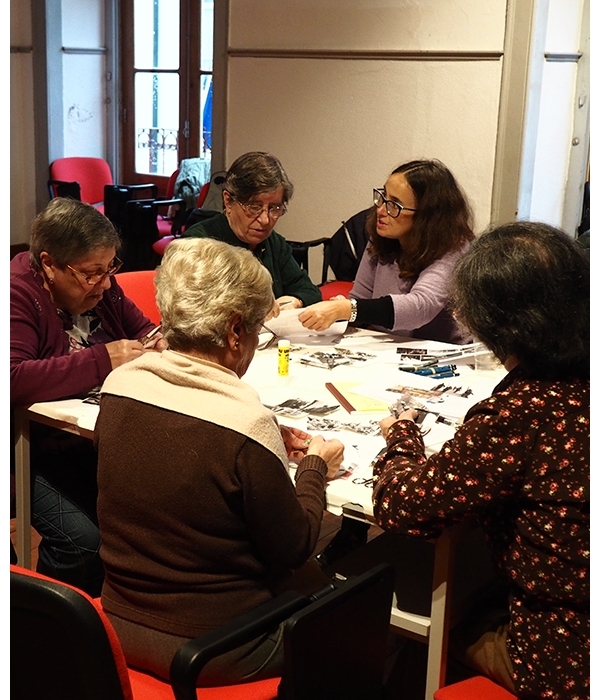

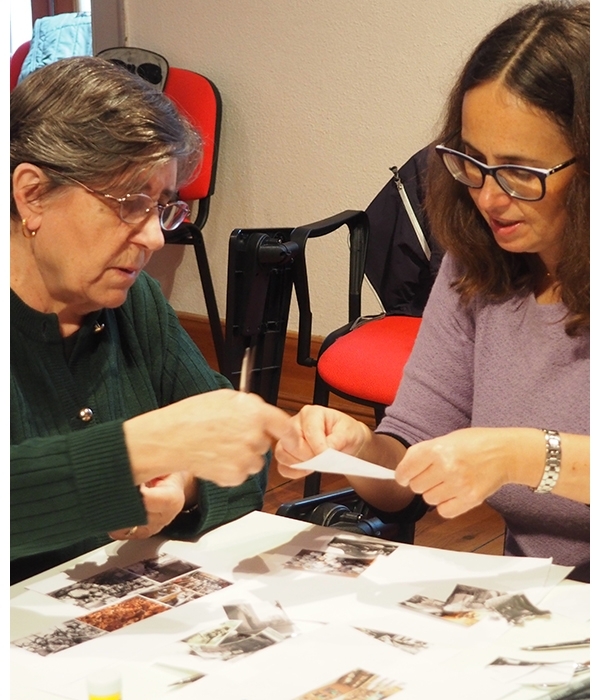
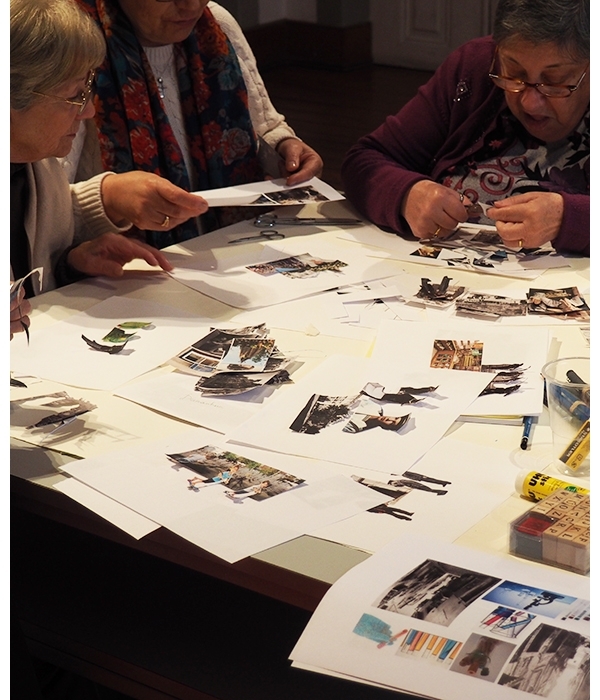
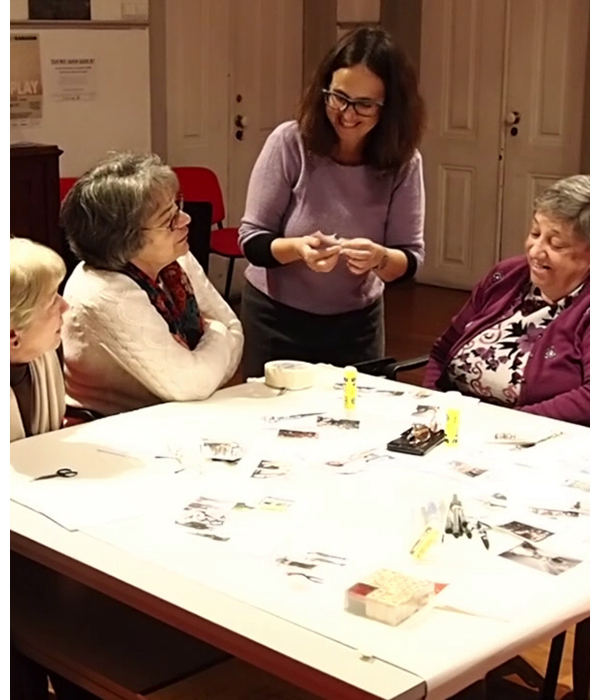
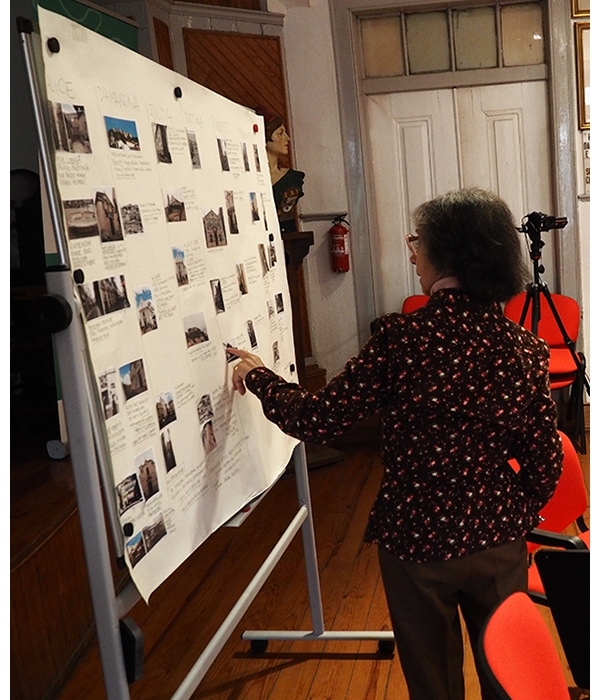
board games
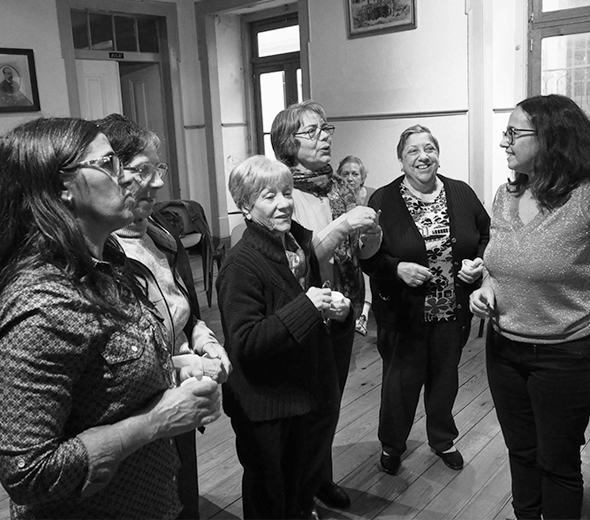
participants
Adelina (78, Portugal), Alice (70, Lisbon, Portugal), Diamantina (78, Portugal), Francisco (61, Lisbon, Portugal), Isilda (69, Portugal), José (80, Lisbon, Portugal), Maria (73, Portugal), Celeste (73, Portugal), Maria do Rosário (65, Lisbon, Portugal), Nuno (58, Lisbon, Portugal), Justina (80, Portugal), Conceição (50, Portugal). Volunteer: Khaled Berdi. Logistics: Marisa Moura (Coord. Saber Maior Senior University). Promotor: Anabela Monraia (Social Entrepreneurship Office, Santa Maria Maior Parish, Lisbon Municipality).
support and collaboration
Santa Maria Maior Parish (Lisbon Municipality), and Saber Maior Senior University, collaborated and promoted the participative artistic laboratory “Legacies: let’s create a board game”, coordinated by the Centre of Art History and Artistic Research (CHAIA, U. Évora).

